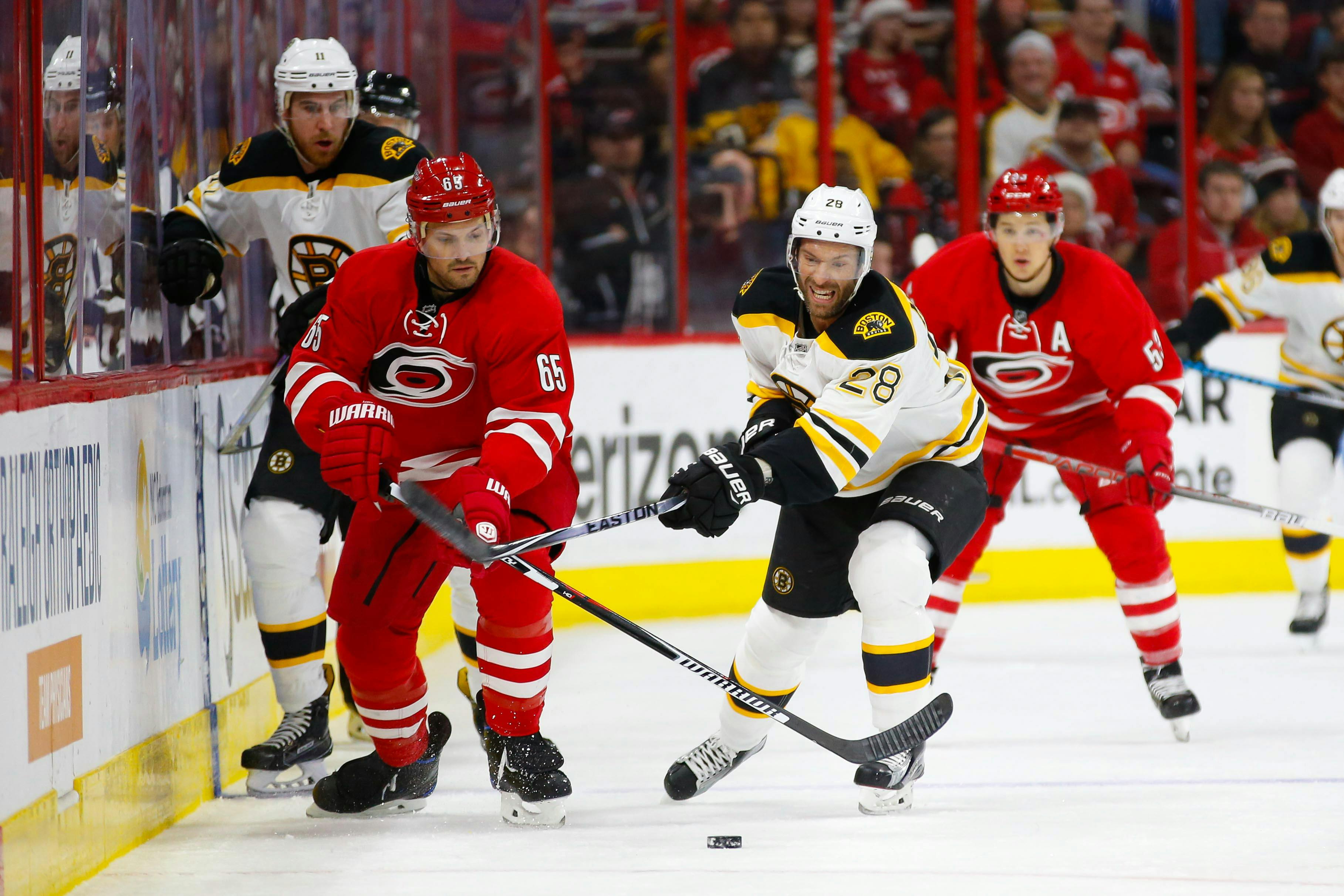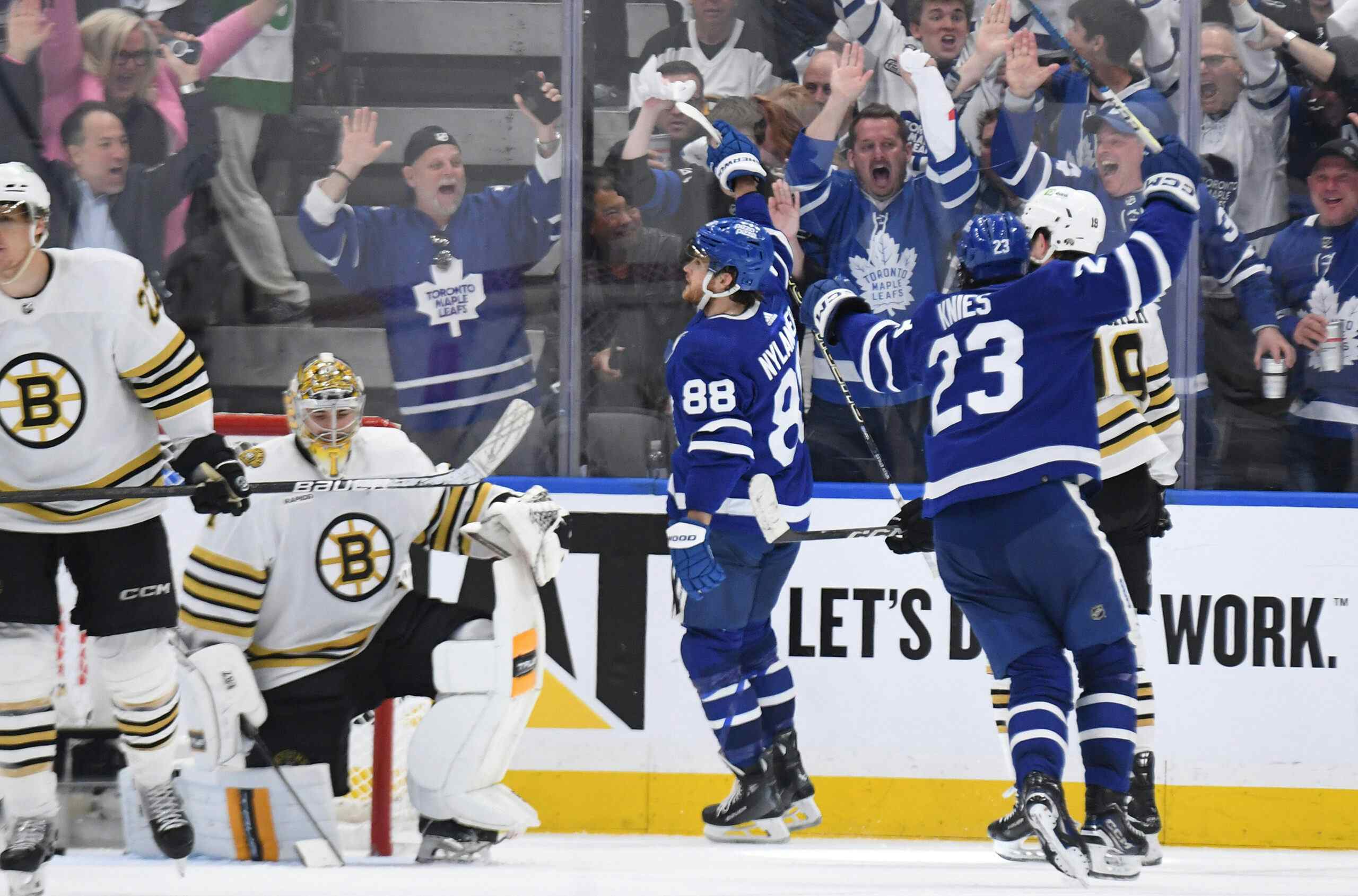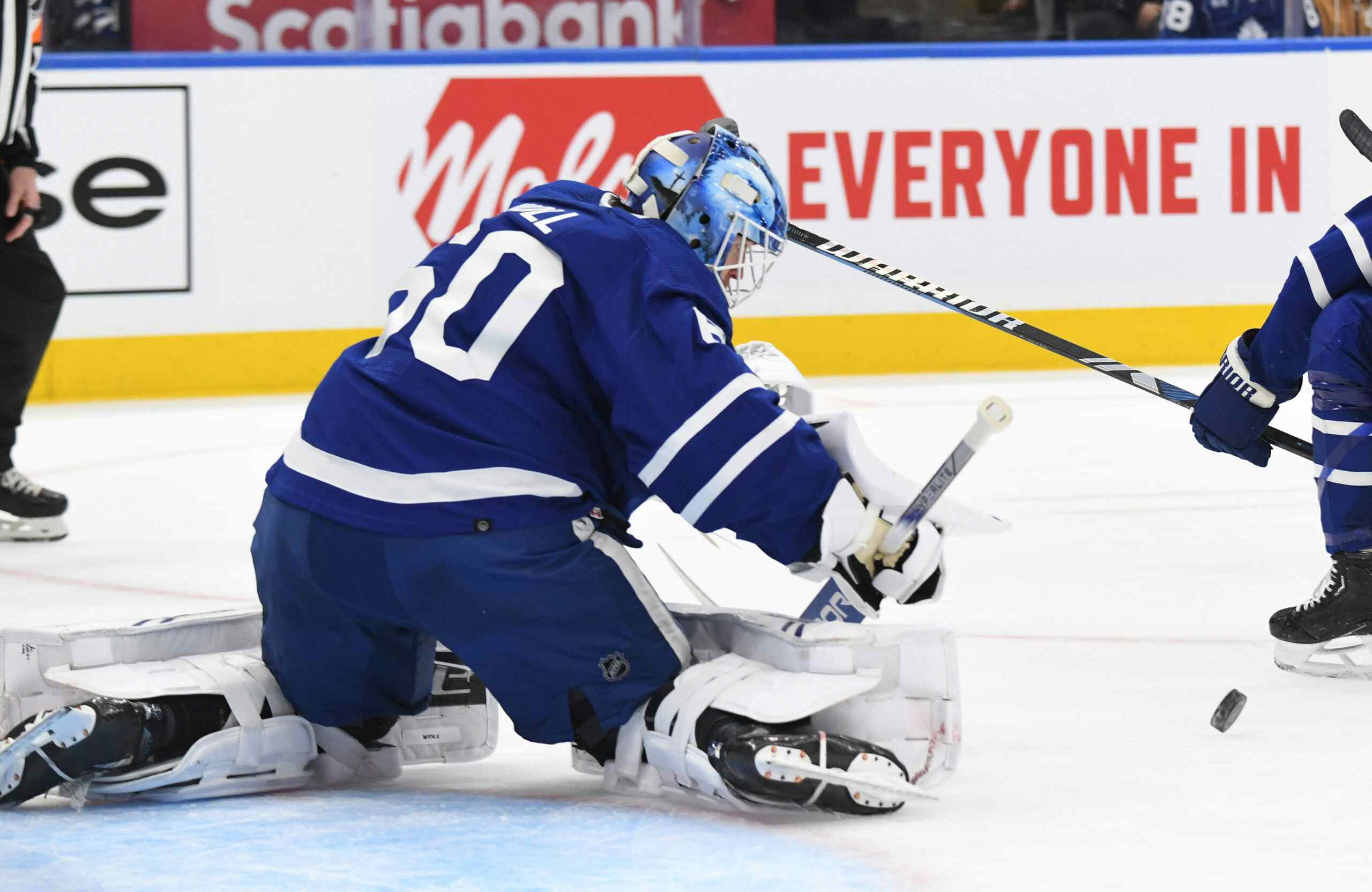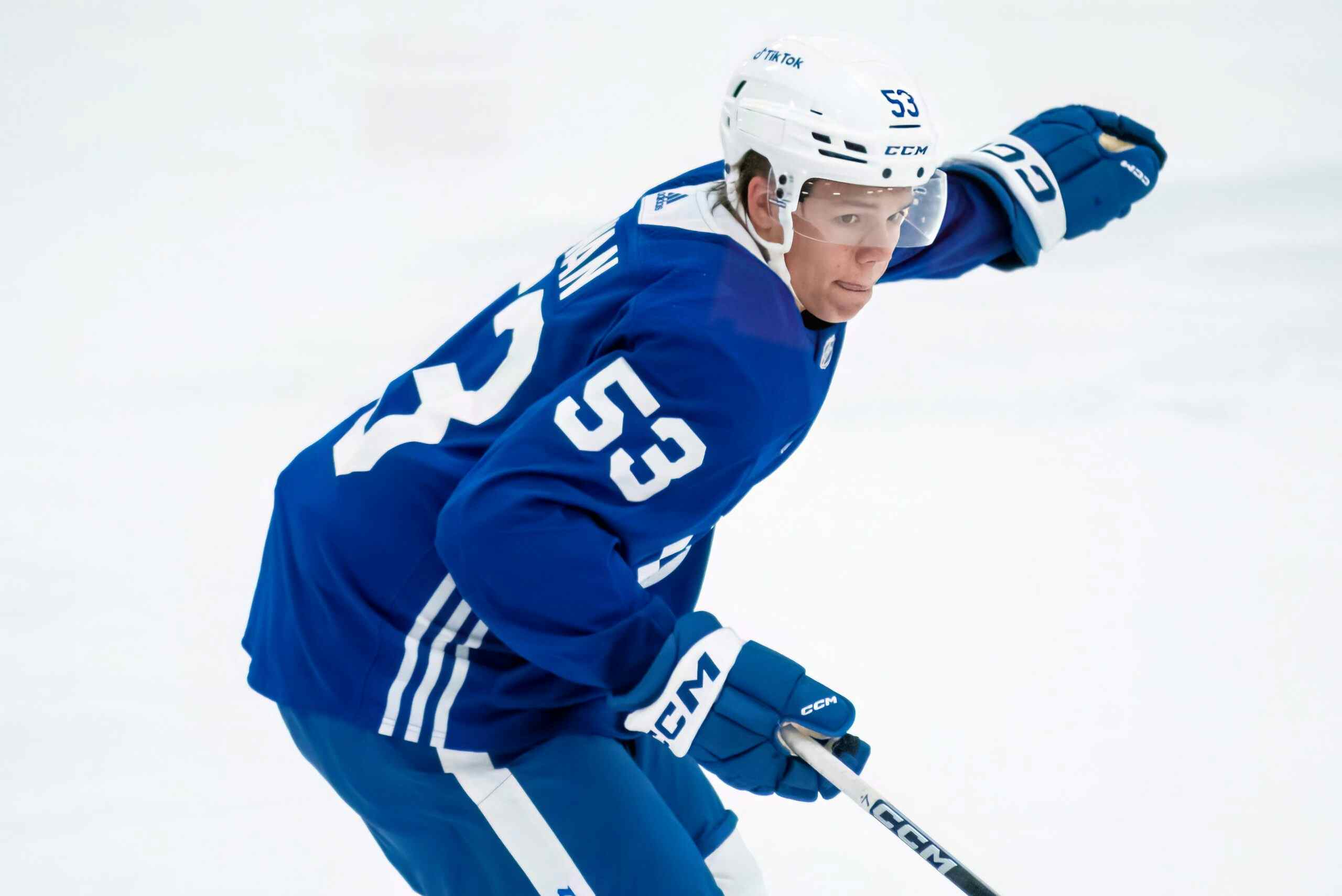Leafs UFA Review: An Inefficiently Efficient Week

It’s safe to say that, as far as putting pen to paper with free agents, the Toronto Maple Leafs have called it an offseason. Sure, there is a ton of room and flexibility for one more big push via a trade (and we’ll talk about that in a separate post), but given the sheer stock of capable players signed at every position, and the stretch of calm over the past 36 hours, it’s safe to say that all is settled for now. The haul, when all was said and done?
- Three veteran NHLers in Ron Hainsey, Dominic Moore, and Patrick Marleau
- Two retained tweener goaltenders in Garret Sparks and Curtis McElhinney
- American Hockey League support in Chris Mueller, Vincent LoVerde, and the return of Colin Greening
By name, that’s a pretty decent haul. However, the specifications of the deals have people concerned. After all, this team has as many prospects as they do, and they used three SPC’s on probable AHLers? They have all these kids up for renewal, and they gave two multi-year 35+ deals? Patrick Marleau makes $6.25 million when Players X, Y, and Z all signed sweetheart deals?
It seems like sloppy negotiating, and I totally get the concern. There isn’t one signing on that list where you can say “oh, the Leafs got a bargain”, and in terms of raw salary, they probably come out a little bit behind. It’s hard to argue against that. But given the state of the market, it makes sense for the Leafs to take the swing that they have.
You Can’t Always Get What You Want
“Sure, but look at what this guy signed for in this other city…”
There’s been a lot of that uttered in Toronto over the past few days, largely because a lot of players are taking cheaper contracts than originally expected. But looking at the market, a lot of the worthwhile names of profile that signed didn’t really rock the boat this summer.
- Joe Thornton, Jordan Weal, Derek Ryan, Brendan Smith, Kris Versteeg, TJ Oshie, and Patrick Eaves all stayed with their current teams.
- Evgeny Dadonov came over from the KHL, but signed with the team (Florida) that drafted him. Kevin Shattenkirk jumped ship on a deal that shocked everybody, but he went to his childhood New York Rangers. Sam Gagner went to the Vancouver Canucks, a team that his father Dave ended his career with and worked for over the span of half a decade.
- Many of the biggest “bargains” that have been signed already have gone to players moving, but to familiar places. Justin Williams went back to Carolina, where he won his first Stanley Cup. Mike Cammalleri went back to Los Angeles, where he had his best years. Patrick Sharp went back to Chicago, where he won his cups, and Scott Hartnell went back to Nashville, where he began his career and built his name.
- Brian Campbell is still on the market and considered a good bet for at least one more year, but it’s pretty common knowledge that he only wants to play in Chicago.
Then you’ve got this going on in the goaltending market:
Almost every other backup stayed with their team, went to a former team (Johnson), or picked a market for family reasons (Miller). Unless you wanted to promise Anders Nilsson or Antti Niemi a shot at Frederik Andersen’s job, or fancied a high-price Jonathan Bernier reunion, giving Sparks and McElhinney cheap renewals and letting them sort out who backs up and who starts for the Marlies in September was the clear-as-day safest option.
Simply put, there wasn’t a ton left in terms of quality talent once you shave of the players who caved for familiarity. The top skaters that have gone into unknown territory so far are Martin Hanzal, Nick Bonino, Brian Boyle, Nate Thompson, Karl Alzner, Dmitry Kulikov, Trevor Daley, Michael Del Zotto, Dan Girardi, Matt Hunwick, Chris Kunitz, Alexander Radulov, Nail Yakupov, Benoit Pouliot, and Radim Vrbata.
There are only a handful of players here that even seem worthwhile of investment. Of those, most either took term (Radulov, Bonino), got their payday through lower taxes (Vrbata, Kunitz), or picked an barren team to boost their stock back up (Del Zotto, Pouliot, Yakupov). There are still a few quality players left on the market that will likely fall into this mix, like Jaromir Jagr, PA Parenteau, and Cody Franson, but something else worth keeping in mind…
Why Does A Team Acquire Budget Players?
The Leafs are past the stage where value maximization is key. People are quick to point to the budget signings and acquisitions that the team made in the 2015/16 season. Acquisitions like Matt Hunwick, PA Parenteau, Brad Boyes, Mark Arcobello, Shawn Matthias, Daniel Winnik, Michael Grabner, Martin Marincin…
It was an island of misfit toys. They played like one, too; only Parenteau had a particularly impressive season and they weren’t even able to move him. The only player that a team that was clearly looking to pump and dump was able to shed purely for hockey assets was Matthias, who went for Colin Smith (who the team walked away from), and a 4th round pick (used to select Keaton Middleton, who’s NHL odds are slim).
Everybody else? Not a ton came back. Technically, Winnik turned into Connor Carrick and Carl Grundstrom, but that was because the Leafs were willing to take Brooks Laich’s salary on. That was the value of these signings. They gave the Leafs a roster that didn’t look like an obvious tank team (but still finished 30th) and allowed them to take on deadweight salary, like that Winnik trade or the Dion Phaneuf move to the Senators, where they took on a bevy of two-year contracts.
Why did these players accept these offers, then? Well, for most of them, the Leafs were supposed to be a launch pad to better contracts. If the 2015/16’s team puck luck was a bit better, they likely would’ve been, but when you’re a catastrophic team in the biggest market, it doesn’t really work in your favour. Today, a player that would be coming to the Leafs on a low-cost deal is thinking about now, rather than later; they’d have to be ring chasing rather than opportunity chasing.
Some of us feel that the Leafs are a team worth ring-chasing with. Most of the league will want to see a strong run out of them first. It wouldn’t shock me if the general perception is that the Leafs are in the middle of those two descriptions, and not a place to sign short and cheap, unless you want to risk losing your spot in training camp and ending up on the waiver wire, or playing limited minutes on a team that you’re not sure is going to get you what you seek in the long run.
Play Style Probably Matters

Player Deployment Charts via HockeyViz.com
On the Leafs’ end of things, their goal is to win hockey games, not win the best bang-for-buck award. While I’m probably one of the bigger proponents of “just get the best 20 players on the ice” you’ll find, an environment like that also has its fair share of diminishing returns; particularly when you have to change your system and play style to fit four lines and three pairs that are nothing alike.
Being realistic, you want the most talented players that fit your system, so long as your system is modern enough. Toronto’s up-tempo, slot-heavy, cycle-heavy game that seems to often involve racing between the two offensive zones and putting the puck in threatening areas is one that is likely to pay dividends, so long as your entire team can play it, and doesn’t fall apart against meaningful competition.
Last year, it was very evident that they couldn’t. They were one winger short in the Top 9; bless Zach Hyman’s heart, he was elite at the cycle component, but couldn’t finish. They were a lot short in their bottom line and bottom pair; Ben Smith had little to contribute in terms of anything, Brian Boyle was a marked improvement but couldn’t keep up with the pace the rest of his team set at times, Matt Martin couldn’t finish, Matt Hunwick was as versatile as you could expect him to be but struggled against top opponents, and Roman Polak always looked like he was fighting the ice.
That group played limited minutes, but when they did, they couldn’t contribute much offensively, they’d take a ton of penalties, and while trying to kill time, they’d often end up sucking the momentum out of the team. It was an ends to a mean situation, so the Leafs were tasked with finding replacements that play hard working, depth-player hockey but shared the general traits of the rest of the team.
Well, it’s a good thing that Patrick Marleau can still flip over to centre in a pinch, can still kill penalties, can still put 20 pucks in the net, and can still fly like the kids can.
Failed to load video.
It’s a good thing that while Ron Hainsey isn’t ever going to be confused for Bobby Orr and isn’t going to drive play at a top level, he’s still floating around even on good teams while playing against all forms of compeition, and can play on both the left and right sides. Oh, and while he’s not an elite skater, he can still move a little too.
Failed to load video.
Dominic Moore’s relative shot attempt numbers were horrific, but so were his regular linemates (Riley Nash and Tim Schaller), and relative is relative to the second best possession team in the league. Yet, he was still a league above Smith, still wins those pesky Babcock-requested faceoffs, has an extra gear that Boyle simply didn’t, and can still put points on the board.
Failed to load video.
Sure, we could point to Tomas Vanek and say that he can bang in goals on the Matthews and Nylander line for much less than Marleau, but that also requires him to be able to keep up with them and track back defensively. We can point to Jaromir Jagr’s still-great production and possession numbers, but put him on a line with Mitch Marner or Kasperi Kapanen and he’ll be seeing dust trails. I’ve got a lot of time for Cody Franson, and some team will probably get a solid deal, but in the event that the puck does end up heading towards the defensive zone, I’m probably trusting Hainsey over him to get back and retrieve it.
Babcock referenced this when speaking to the media yesterday:
“I think our young guys will be the fountain of youth for them,” Babcock said. “They can skate. You’re not old till your legs go. Everybody goes at a different time. But Patty is a great glider, same with Hainsey, same with Moore. “We’re not concerned about that.”
There’s a lot of value in the leftover players, and the few who took unique changes of scenery. But it seems pretty obvious to me that Toronto’s goal with these signings was to get players comfortable with playing against all forms of competition and to build four lines and three pairs that can keep up with each other, so opponents don’t get the window of opportunity to set their own terms and pace. Whether they needed to worry about it or not, they’ve addressed their concerns at the faceoff dot, they’ve made their penalty kill significantly quicker and more skilled, and getting more disciplined players who don’t struggle as much to chase, they’ve likely made moves that will keep them out of the box as well.
Spend It While You’ve Got It
This brings us to the salary. For those keeping score, the trio of skaters the Leafs signed will cost $10.25 million this year, $9.25 million in 2018/19, and $6.25 million in 2019/20 (assuming, of course, that Marleau isn’t shipped to a floor team the second his signing bonus is paid, which would make it $0). That sounds a little daunting with William Nylander 12 months from extension, and Mitch Marner and Auston Matthews due in 2018/19, but even the worst case scenario involves a year of Marleau/Trio overlap. As explained in my post that focused on what Marleau brings:
Joffrey Lupul no longer acts as a LTIR buffer and his $5.25M becomes a complete non-factor to the books. Leo Komarov’s $2.95 million likely turns into him departing or taking a pay cut. Eric Fehr’s $2 million is gone, and Alexey Marchenko’s $1.45 million will be too. Tim Gleason and Jared Cowen’s $2.08 million in buyouts also disappears. James van Riemsdyk and Tyler Bozak will likely get raises, but it’s doubtful that it’s here; I’d expect that their $8.45 million to get replaced with cheaper options, be it veterans or kids on entry-level deals. In fact, this signing theoretically allows them to use JVR as a trade asset while getting a player that could act as a bridge between him and the next young winger in the lineup, should they decide to go that route.Of course, William Nylander gets his pay raise, but he and maybe Connor Carrick are the only two crucial names coming up next year. The big one is the year after, when Mitch Marner, Auston Matthews, Jake Gardiner, and Kasperi Kapanen are up for renewal, but you’d imagine by then that Ron Hainsey’s contract is out, Timothy Liljegren be at least one ELC covering ice time on the point. Matt Martin will have just two years and $2.5 million in real dollars left on his books on July 2nd, 2019, so if they feel his work is done, they could parachute him to a budget team.
The real mess for the Leafs is not in the next three seasons, but in the fourth, when the secondary youth core begins to require raises to go with the big ones. That makes this trio of veterans, particularly Hainsey and Moore, inconsequential to long-term cap expenditure. If anything, the “vet three” can help temper talks a bit. If Marleau plays on a line with one or two of the “big three” and looks good doing so, they can say that some of the younger player’s growth comes from playing with him as part of the negotiation.
If the team doesn’t make a big trade and mostly sticks with this forward group, Kasperi Kapanen might not be able to get into a ton of games in this year, limiting his body of work before his first extension at the end of 18/19. The same goes for Hainsey cutting in front of a player like Travis Dermott or Calle Rosen, or Moore blocking off Frederik Gauthier or Adam Brooks. Not only should these three make the team better this year and next, they’ll make sure that their internal replacements are cheaper once they’re ready to make that leap.
Some would argue that staying under the cap, not using Long-Term Injured Reserve, and being able to eat some of the rookie bonus overage due at the end of the season would be more beneficial than that. Even if you replace these three with $900,000 rookies, you’re still at $5.87 million remaining before the extensions of Zach Hyman and Connor Brown, and before any additional bonuses that those three rookies could run you (Rosen’s contract, for example, has up to $850,000 in Schedule A bonuses).
In a best case scenario, you’re downgrading from three known quantity veterans that fit the team in order to hopefully save about $1.5-2 million this year. Put in that context, it seems to make more sense to strike while you have the opportunity. It makes more sense to begin going for it now while tweaking as you go, than waiting another few years to take a leap.
Summing It Up..
This post went way longer than it should have, so let’s bring all these points together:
- Most of the talent in this year’s UFA class went to familiar places, suggesting the Leafs likely weren’t going to just be able to sign them
- Toronto’s rising but not known-contender status is likely to make project players leery of hopping on board
- Toronto paid full sticker price, but acquired players that fit their model of high tempo, hard-working, to-the-net hockey
- Leafs management likely made a conscious decision to avoid slower players that wouldn’t fit in with how the team is built, even if they were more cost efficient
- Signing veterans to short enough terms to not negatively impact their second wave of RFA renewals was good, bridge-style look that will keep the costs down on younger talent while upgrading the roster now
- The LTIR gang has the Leafs so close to the cap anyway that skipping out on upgrading to leave some rookie bonus buffer probably isn’t worthwhile.
Most importantly, the Leafs are as good today as they’ve been in well over a decade, and might be in the cup contention conversation before we know it. It’ll be interesting to see if they make another push for a back-end piece or look to find a way to shed some contracts in the coming days, weeks, and months, but if this is it for the offseason, I’d be pretty satisfied. These signings are far from shrewd, but they fit the big picture, make the team better, and don’t really impact the balance sheet too much. This isn’t an A+, grand slam, best case scenario summer, but it’s looking pretty good nonetheless.
Recent articles from Jeff Veillette





